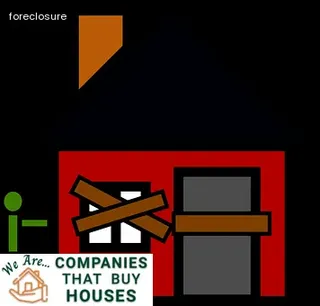Navigating the timeline of a foreclosure process in Ohio can be a daunting experience for many homeowners. Knowing what to expect and understanding the steps can help you make informed decisions and avoid costly mistakes.
The foreclosure process typically begins when a homeowner fails to make their mortgage payments and the lender files a default notice with the courts. From there, the lender will attempt to collect on the debt through various means, including obtaining judgment from the court.
This judgment allows them to take possession of the property in order to recoup their losses. As part of this process, homeowners are also provided with certain rights and protections under Ohio law that must be respected by lenders during this difficult time.
It is important for homeowners to familiarize themselves with these laws in order to ensure that their rights are protected throughout the process. Understanding how Ohio's foreclosure timeline works and knowing what steps you need to take along each step is key for successfully navigating this challenging situation and ultimately protecting your home.

Ohio homeowners facing foreclosure are entitled to certain pre-foreclosure rights and procedures to help them navigate the timeline. Homeowners should familiarize themselves with the legal process in their state, as this varies from state to state.
In Ohio, lenders must provide homeowners with a notice of default or notice of sale before initiating any legal action. This document notifies the homeowner that they are in default on their loan and will be subject to foreclosure proceedings if they do not take steps to rectify the situation.
It is important for homeowners to understand their rights during this period, including their right to sell or refinance their property. They may also be able to negotiate with the lender in order to reduce or eliminate the debt or restructure the terms of repayment.
If no agreement can be reached, then foreclosure proceedings will begin and it is important for homeowners to understand what happens next so that they can prepare accordingly.
The state of Ohio has specific laws and regulations in place for the foreclosure process. Foreclosure is a legal process in which a lender attempts to recover the balance of a loan from a borrower who has defaulted on payments.
In Ohio, lenders can begin the foreclosure process as soon as the borrower misses two consecutive mortgage payments. During this time, they must provide written notice to the homeowner that lists their rights and obligations.
Homeowners have up to 28 days to cure the default before a foreclosure proceeding can be initiated. The lender must file an action in court and serve the borrower with notice of the complaint filed.
Once notified, homeowners have 28 days to file an answer with the court or request mediation services if available. After this initial period, if no agreement is reached between parties, then a court hearing will be held where a judge may grant an order of foreclosure if necessary.
Homeowners should take care to understand all aspects of Ohio's foreclosure laws so they can make informed decisions throughout this process.

The Ohio foreclosure process is a complex timeline that can be difficult to understand, but it's important for homeowners to be aware of the various steps and requirements so they can make informed decisions. To begin the foreclosure process, a lender will typically file a complaint with the court system, followed by a summons being issued and delivered to the homeowner.
The homeowner then has 28 days to respond to the summons which includes filing an Answer with the court. If no response is received in that time frame, the lender can request for a default judgment which would result in an order of sale being posted at the home address.
Once this happens, there is a 21-day waiting period before an auction takes place. At this point, if the homeowner wishes to stop or delay the foreclosure process they must appeal to their lender.
If they are unsuccessful and no buyers come forward at auction then the property will be sold back to its original lender and ownership will revert back to them. It's important for homeowners facing foreclosure in Ohio to remember that each step of this process has deadlines attached and if those deadlines are not met then it can have serious repercussions.
Homeowners struggling with financial hardship can take steps to avoid foreclosure and keep their home. The first step is to reach out to your lender as soon as possible.
Lenders may be willing to adjust your payment plan or offer a loan modification if you communicate with them early in the process. You may also be able to refinance the existing loan at a lower interest rate or obtain a forbearance, which allows you to reduce or suspend payments for a certain period of time.
Additionally, consider selling the property before it enters foreclosure. A real estate agent or attorney can help in this process by providing advice and assistance in marketing the property.
Finally, consider filing for bankruptcy protection as a last resort option; however, be aware that this could have serious long-term financial implications and should only be used when all other options have been exhausted.

Bankruptcy can be a solution to stop foreclosure, as filing for bankruptcy can put an automatic stay on the foreclosure process. This means that during the bankruptcy proceedings, a homeowner is protected from any further action by their lender.
Bankruptcy can help homeowners who are facing foreclosure due to financial hardship, and it should be considered as an option if all other avenues have been exhausted. It's important to note that filing for bankruptcy does not guarantee that the foreclosure will be stopped or reversed, but rather puts a temporary hold on the process while the homeowner works out their debts with the court.
The specific steps involved in filing for bankruptcy vary depending on the state in which you live; however, consulting with an experienced attorney is recommended to ensure that all legal requirements are met. Although bankruptcy is often seen as a last resort, it may be able to help some homeowners struggling with their mortgage payments find relief and keep their homes.
The first step in the Ohio foreclosure process is the delivery of a breach letter. This letter serves as an official notification to the homeowner that their mortgage loan has fallen into default, and that they must take action in order to stop the foreclosure process.
The breach letter will outline how much money is owed, when it must be paid, and any other details regarding the terms of repayment. It is important for homeowners to fully understand what this document means, and how it affects them.
It may be possible to enter into a repayment plan with the lender or modify existing loan terms in order to prevent foreclosure proceedings from occurring. Additionally, a homeowner may have other legal options available depending on the circumstances of their situation.
Ultimately, homeowners should seek professional advice from a qualified attorney or financial advisor to ensure that they are making informed decisions when responding to their breach letter.

Defaulting on mortgage payments can be a stressful and intimidating process. If you are unable to make your mortgage payments in Ohio, the foreclosure process will begin.
The timeline starts when your loan servicer - typically the bank that lent you the money to purchase the home - records a Notice of Default with the county recorder's office. From there, you have a certain number of days to cure the default by either paying off the entire balance or entering into a repayment agreement with your lender.
If you fail to do so, the lender can then file a foreclosure action against you, which will result in an auction of your home. At this point, it is important to understand that even if you are able to bring your loan current, there may still be additional fees associated with reinstating your loan.
Additionally, if at any point during the foreclosure process you are able to find a way to pay off all of your past due payments and fees in full, this may stop the foreclosure process altogether. It is important for homeowners facing foreclosure in Ohio to understand their rights and act quickly throughout this process in order to keep their homes.
In Ohio, homeowners facing foreclosure have options for stopping the process. One of the most effective strategies is to contact a housing counselor who can help assess your situation and provide resources for foreclosure prevention.
If you qualify for a loan modification, the servicer may be willing to work with you to reduce the mortgage payments and lower interest rates. If a loan modification is not possible, homeowners should investigate if they are eligible for other foreclosure prevention programs such as repayment plans or forbearance agreements.
Additionally, it may be possible to apply for an FHA short sale if you are unable to make payments on your home or meet the terms of a loan modification. Finally, filing bankruptcy can stop foreclosures temporarily while giving you time to explore other options.
Ultimately, homeowners in Ohio should take action quickly if they are at risk of foreclosure and remember that there are resources available that can help them stay in their homes.

When it comes to foreclosure, Ohio has a unique set of rules when it comes to deficiency judgments. A deficiency judgment is ordered by a court and requires the borrower to pay the difference between the sale price of their home and the amount they owed on their loan.
This can occur if the proceeds from a foreclosure sale don't cover what is owed on the mortgage. In order to understand how this could happen, it's important to take a closer look at Ohio's foreclosure process.
Generally, borrowers in Ohio have two options: judicial or non-judicial foreclosures. Judicial foreclosures require lenders to go through a court process which often takes longer than non-judicial foreclosures, allowing borrowers more time before their homes are taken away.
Once the lender successfully obtains a foreclosure sale, any remaining balance due on the loan will be added up and then granted as part of a deficiency judgment issued by the court. This amount must then be paid by the borrower in order for them to clear their debt obligations with their lender.
It's important for those facing foreclosure in Ohio to have an understanding of how deficiency judgments work so that they can make informed decisions about whether or not they should fight their foreclosure case in court.
When facing foreclosure in Ohio, it is important to know that legal assistance is available. Homeowners should consider consulting a qualified attorney who is knowledgeable about the state's foreclosure laws and procedures.
An experienced attorney can provide advice on how to best protect one's rights throughout the process. Furthermore, they can also help with negotiating a loan modification or other possible resolution such as a short sale or deed-in-lieu of foreclosure.
It is extremely helpful to have an advocate when navigating the complex timeline of an Ohio foreclosure. A lawyer can explain all the options available, including any government assistance programs for those experiencing financial hardship, and guide homeowners through each step of the process.

The sale of your home is the final step in the Ohio foreclosure process, so it's important to take steps to avoid it. Researching your rights and options can help you stay ahead of foreclosure proceedings and find a solution that works for both you and your lender.
To prevent a sale, try negotiating a repayment plan or loan modification with your lender that allows you to keep your home. Other alternatives include refinancing, deed-in-lieu of foreclosure, or short sale.
You may also be able to sell the house yourself before the sale date. Working closely with a professional housing counselor can be immensely helpful in navigating these options and understanding what they mean for you financially.
It's important to act quickly once you receive notice of foreclosure, as missing deadlines could result in accelerated timelines or further legal action against you.
When it comes to foreclosure, there are financial resources available to help Ohio homeowners navigate the timeline of pre-foreclosure. Homeowners should be aware of the different options available to them and how they can use them to their advantage.
The United States Department of Housing and Urban Development (HUD) provides assistance via counseling services and loan modification programs. Additionally, homeowners may be eligible for home equity line of credit loans and government grants for foreclosure prevention.
Homeowners should also look into the possibility of restructuring their mortgage payments or refinancing in order to keep their property out of foreclosure. The Ohio Housing Finance Agency is another great resource for those looking for assistance with keeping their homes during pre-foreclosure periods; they offer down payment assistance and second mortgage loans that could help lower monthly mortgage payments.
Finally, many local non-profits are a great source of information on foreclosure prevention, offering resources such as legal advice and assistance in budget management.

Foreclosure is a difficult process, and homeowners may feel overwhelmed when attempting to negotiate their debts and protect their home. Fortunately, there are organizations that specialize in providing assistance to those facing foreclosure in Ohio.
The Ohio Poverty Law Center (OPLC) is a great resource for those looking for help with debt negotiations and other services related to foreclosure. OPLC provides free legal advice, education, and representation to low-income individuals and families who are struggling with debt.
They also provide legal counseling and assistance in filing bankruptcy if necessary. Additionally, many local county bar associations throughout Ohio offer free or low-cost legal assistance to those facing foreclosure proceedings.
Homeowners should contact the OPLC or their local bar association for help negotiating their debts during this difficult time.
The Ohio foreclosure process typically takes between 8 and 24 months to complete. The timeline begins when the lender files a complaint with the court and serves it to the homeowner.
From there, a judgment of foreclosure is issued and then an auction is held. Along the way, homeowners have several opportunities to work out a payment plan with their lender or hire an attorney to help them negotiate with their lender.
In some cases, lenders may offer alternative options such as loan modification or forbearance agreements. Once the auction is completed, if no agreement has been reached and the property does not sell at auction, it reverts back to the lender who can then pursue other means of foreclosure such as eviction or deed-in-lieu of foreclosure.
Ultimately, how long it takes for a house to foreclose in Ohio depends on whether or not an agreement can be worked out between the homeowner and lender before or during the foreclosure process.

For many homeowners, allowing their house to go into foreclosure is a difficult decision. Despite the financial hardship that can come along with it, there are various reasons why someone would do so.
The most common reason is when a homeowner falls behind on payments due to job loss or medical bills that cannot be paid. In other cases, an owner might not have the funds to make necessary repairs or upgrades to their home, making it difficult to maintain ownership.
Additionally, some individuals may find it hard to keep up with rising mortgage payments as interest rates increase. Finally, if a homeowner decides to move out of state or has difficulty selling the home in the current market, they may have no choice but to foreclose on their property.
No matter the reason for foreclosure, navigating the timeline of the Ohio process can be daunting for homeowners who are unfamiliar with its intricacies.
In Ohio, foreclosures are a legal process that begins when a homeowner defaults on their mortgage payments. The foreclosure process typically starts with the lender filing a complaint in court against the homeowner and then serving them with a summons and complaint.
From there, the court will set a date for an auction of the property in question. During this time, the home is considered to be in pre-foreclosure.
The foreclosure auction is open to potential buyers and if no one bids on the home or if the bid does not cover what is owed by the homeowner, then it becomes a bank-owned property. If someone does purchase the property at auction, they will take ownership of it and become responsible for any remaining mortgages or liens that may still exist from previous owners.
It's important for homeowners facing foreclosure in Ohio to understand their rights throughout this process, which include an opportunity to challenge any wrongful actions taken by lenders or creditors. Knowing all of your options can help you navigate this difficult timeline and hopefully come out with a favorable outcome.
Ohio is a right of redemption state, meaning that homeowners who have fallen into foreclosure can still exercise their right to redeem the property. This means that after a foreclosure sale is complete, the homeowner has a certain period of time in which they can regain ownership of the property through payment of all back payments and fees.
The current timeline for Ohio foreclosure redemption is three months from the date of sheriff sale. Homeowners should be aware that if they fail to meet this timeline, the property will become officially sold to the purchaser at sheriff sale and no longer be eligible for redemption.
It is important for Ohio homeowners to familiarize themselves with their rights and understand how they are protected under Ohio law when facing foreclosure proceedings.